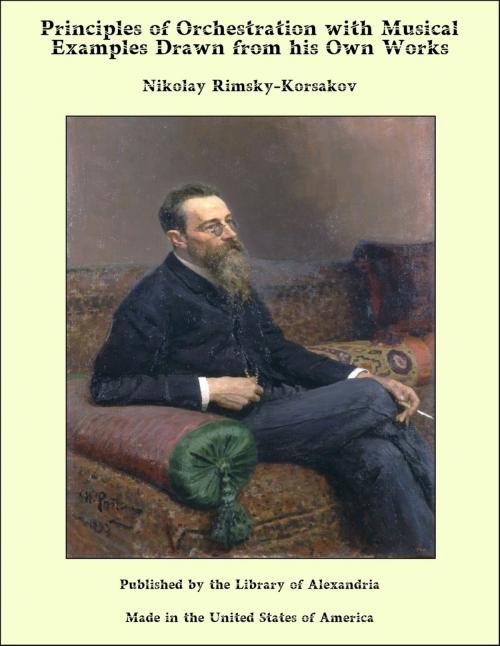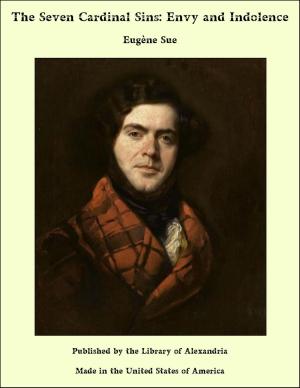Principles of Orchestration with Musical Examples Drawn from his Own Works
Nonfiction, Religion & Spirituality, New Age, History, Fiction & Literature| Author: | Nikolay Rimsky-Korsakov | ISBN: | 9781465604118 |
| Publisher: | Library of Alexandria | Publication: | March 8, 2015 |
| Imprint: | Language: | English |
| Author: | Nikolay Rimsky-Korsakov |
| ISBN: | 9781465604118 |
| Publisher: | Library of Alexandria |
| Publication: | March 8, 2015 |
| Imprint: | |
| Language: | English |
In his "Memoirs of my musical life" the following passage occurs: "I had planned to devote all my energies to the compilation of a full treatise on orchestration. To this end I made several rough copies, jotting down explanatory notes detailing the technique of different instruments. What I intended to present to the world on this subject, was to include everything. The writing of this treatise, or, to be more exact, the sketch for it took up most of my time in the years 1873 and 1874. After reading the works of Tyndall and Helmholtz, I framed an introduction to my work, in which I endeavoured to expound the laws of acoustics as applied to the principles governing the construction of musical instruments. My manual was to begin with a detailed list of instruments, classified in groups and tabulated, including a description of the various systems in use at the present day. I had not yet thought of the second part of the book which was to be devoted to instruments in combination. But I soon realised that I had gone too far. With wind instruments in particular, the different systems were innumerable, and each manufacturer favoured his own pet theory. By the addition of a certain key the maker endowed his instrument with the possibility of a new trill, and made some difficult passages more playable than on an instrument of another kind. "There was no end to such complications. In the brass, I found instruments with three, four, and five valves, the mechanism varying according to the make. Obviously, I could not hope to cover so large a field; besides, of what value would such a treatise be to the student? Such a mass of detailed description of the various systems, their advantages and drawbacks, could not but fail to confuse the reader only too eager to learn. Naturally he would wish to know what instrument to employ, the extent of its capabilities etc., and getting no satisfactory information he would throw my massive work aside. For these reasons my interest in the book gradually waned, and finally I gave up the task."
In his "Memoirs of my musical life" the following passage occurs: "I had planned to devote all my energies to the compilation of a full treatise on orchestration. To this end I made several rough copies, jotting down explanatory notes detailing the technique of different instruments. What I intended to present to the world on this subject, was to include everything. The writing of this treatise, or, to be more exact, the sketch for it took up most of my time in the years 1873 and 1874. After reading the works of Tyndall and Helmholtz, I framed an introduction to my work, in which I endeavoured to expound the laws of acoustics as applied to the principles governing the construction of musical instruments. My manual was to begin with a detailed list of instruments, classified in groups and tabulated, including a description of the various systems in use at the present day. I had not yet thought of the second part of the book which was to be devoted to instruments in combination. But I soon realised that I had gone too far. With wind instruments in particular, the different systems were innumerable, and each manufacturer favoured his own pet theory. By the addition of a certain key the maker endowed his instrument with the possibility of a new trill, and made some difficult passages more playable than on an instrument of another kind. "There was no end to such complications. In the brass, I found instruments with three, four, and five valves, the mechanism varying according to the make. Obviously, I could not hope to cover so large a field; besides, of what value would such a treatise be to the student? Such a mass of detailed description of the various systems, their advantages and drawbacks, could not but fail to confuse the reader only too eager to learn. Naturally he would wish to know what instrument to employ, the extent of its capabilities etc., and getting no satisfactory information he would throw my massive work aside. For these reasons my interest in the book gradually waned, and finally I gave up the task."















